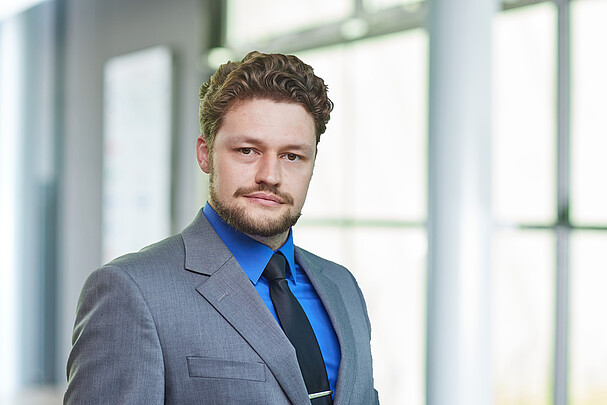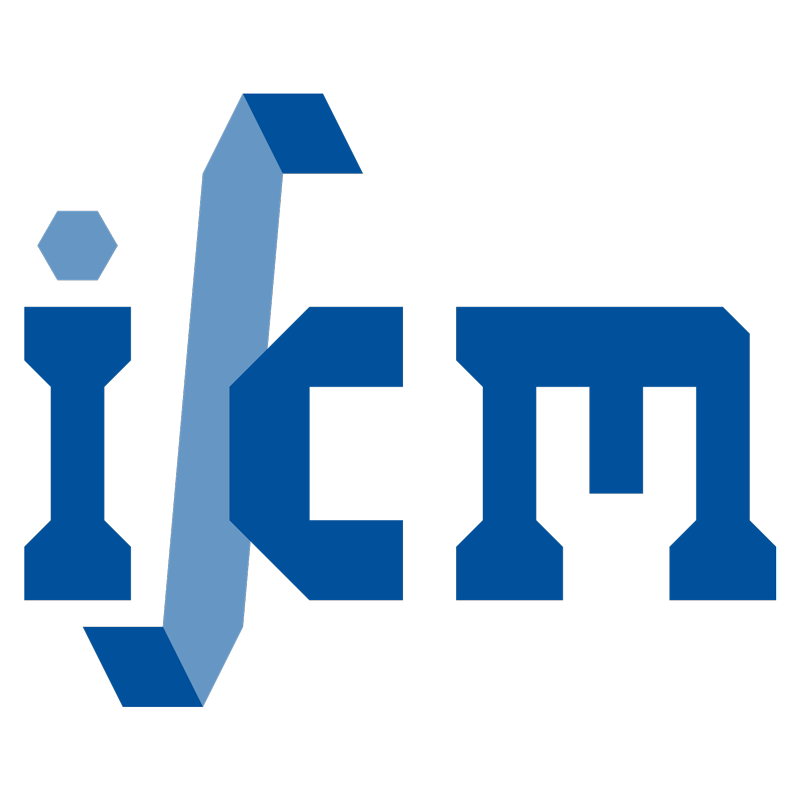Dr.-Ing. Dustin Roman Jantos


30823 Garbsen


-
Research projects
- Topology- and Material Optimization with fiber reinforced materials, tension and compression affine materials (steel/concrete)
- Numerical efficient gradient-enhanced regularization techniques for FEM and meshfree methods
- Additive Manufacturing
-
Publications
Peer-reviewed articles
Showing results 1 - 20 out of 20
A Novel Simulation Approach for Damage Evolution during Tailored Forming. / Liu, Fangrui; Jantos, Dustin Roman; Junker, Philipp.More...
In: Advanced engineering materials, 15.02.2025.Research output: Contribution to journal › Article › Research › peer review
Application of adaptive virtual element method to thermodynamic topology optimization. / Cihan, Mertcan; Aichele, Robin; Jantos, Dustin Roman et al.More...
In: International Journal for Numerical Methods in Engineering, Vol. 125, No. 23, e7575, 07.11.2024.Research output: Contribution to journal › Article › Research › peer review
Application of Taylor series combined with the weighted least square method to thermodynamic topology optimization. / Blaszczyk, Mischa; Jantos, Dustin Roman; Junker, Philipp.More...
In: Computer Methods in Applied Mechanics and Engineering, Vol. 393, 114698, 01.04.2022.Research output: Contribution to journal › Article › Research › peer review
Thermodynamic Topology Optimization of Layered Anisotropic Materials. / Jantos, Dustin R.; Junker, Philipp.More...
Current Trends and Open Problems in Computational Mechanics. Cham: Springer, 2022. p. 217-238.Research output: Chapter in book/report/conference proceeding › Contribution to book/anthology › Research
Untersuchung des Potenzials der Topologieoptimierung in der additiven Fertigung am Beispiel von biegebeanspruchten Bauteilen. / Jantos, D. R.; Röttger, A.; Junker, P.More...
In: Materialwissenschaft und Werkstofftechnik, Vol. 53, No. 10, 05.10.2022, p. 1298-1310.Research output: Contribution to journal › Article › Research › peer review
Thermodynamic topology optimization for sequential additive manufacturing including structural self‐weight. / Kick, Miriam; Jantos, Dustin R.; Junker, Philipp.More...
In: civil engineering design, Vol. 4, No. 5-6, 28.12.2022, p. 162 - 173.Research output: Contribution to journal › Article › Research › peer review
Topology optimization with anisotropic materials, including a filter to smooth fiber pathways. / Jantos, Dustin Roman; Hackl, Klaus; Junker, Philipp.More...
In: Structural and Multidisciplinary Optimization, Vol. 61, No. 5, 05.2020, p. 2135-2154.Research output: Contribution to journal › Article › Research › peer review
Tension/compression anisotropy enhanced topology design. / Gaganelis, Georgios; Jantos, Dustin Roman; Mark, Peter et al.More...
In: Structural and Multidisciplinary Optimization, Vol. 59, No. 6, 15.02.2019, p. 2227-2255.Research output: Contribution to journal › Article › Research › peer review
An accurate and fast regularization approach to thermodynamic topology optimization. / Jantos, Dustin Roman; Hackl, Klaus; Junker, Philipp.More...
In: International Journal for Numerical Methods in Engineering, Vol. 117, No. 9, 02.03.2019, p. 991-1017.Research output: Contribution to journal › Article › Research › peer review
Comparison of thermodynamic topology optimization with SIMP. / Jantos, Dustin Roman; Riedel, Christopher; Hackl, Klaus et al.More...
In: Continuum Mechanics and Thermodynamics, Vol. 31, No. 2, 27.08.2019, p. 521-548.Research output: Contribution to journal › Article › Research › peer review
Innovative Ansätze zur Topologie- und Materialoptimierung basierend auf thermodynamischen Prinzipien. / Jantos, Dustin Roman.More...
2019.Research output: Thesis › Doctoral thesis
Structural and material optimization based on thermodynamic principles. / Jantos, Dustin Roman; Hackl, Klaus; Junker, Philipp.More...
In: PAMM - Proceedings in Applied Mathematics and Mechanics, Vol. 19, No. 1, 18.11.2019.Research output: Contribution to journal › Article › Research › peer review
A fast and robust numerical treatment of a gradient-enhanced model for brittle damage. / Junker, Philipp; Schwarz, Stephan; Jantos, Dustin Roman et al.More...
In: International Journal for Multiscale Computational Engineering, Vol. 17, No. 2, 2019, p. 151-180.Research output: Contribution to journal › Article › Research › peer review
On an accurate and fast regularization approach to thermodynamic based topology optimization. / Jantos, Dustin Roman; Hackl, Klaus; Junker, Philipp.More...
In: PAMM - Proceedings in Applied Mathematics and Mechanics, Vol. 18, No. 1, 17.12.2018.Research output: Contribution to journal › Article › Research › peer review
Optimized growth and reorientation of anisotropic material based on evolution equations. / Jantos, Dustin R.; Hackl, Klaus; Junker, Philipp.More...
In: Computational mechanics, Vol. 62, No. 1, 07.2018, p. 47-66.Research output: Contribution to journal › Article › Research › peer review
Topology and material orientation optimization based on evolution equations. / Jantos, Dustin Roman; Junker, Philipp; Hackl, Klaus.More...
In: PAMM - Proceedings in Applied Mathematics and Mechanics, 15.03.2018, p. 739-740.Research output: Contribution to journal › Article › Research
A variational growth approach to topology optimization. / Junker, P.; Jantos, D.R.; Hackl, K.More...
Proceedings of the 14th International Conference on Computational Plasticity - Fundamentals and Applications, COMPLAS 2017. ed. / Eugenio Onate; Djordje Peric; D. Roger J. Owen; Michele Chiumenti. 2017. p. 235-246.Research output: Chapter in book/report/conference proceeding › Conference contribution › Research
An evolutionary topology optimization approach with variationally controlled growth. / Jantos, D.R.; Junker, P.; Hackl, K.More...
In: Computer Methods in Applied Mechanics and Engineering, Vol. 310, 01.10.2016, p. 780-801.Research output: Contribution to journal › Article › Research › peer review
An evolution equation based approach to topology optimization. / Jantos, Dustin Roman; Junker, Philipp; Hackl, Klaus.More...
In: PAMM - Proceedings in Applied Mathematics and Mechanics, 2016.Research output: Contribution to journal › Article › Research
Analyse und Weiterentwicklung eines variationellen Wachstumsmodells zur Topologieoptimierung. / Jantos, Dustin Roman.More...
2015.Research output: Thesis › Master's thesis
-
CV
Seit 2021 Senior Engineer at IKM 2019-2021 Post-Doc at Chair of Mechanics - Material Theory of Prof. Hackl at Ruhr-Universität Bochum 2015-2019 PhD (mechanical engineering) at Ruhr-Universität Bochum (Degree with Distinction).
Dissertation (in german): Innovative Ansätze zur Topologie- und Materialoptimierung basierend auf thermodynamischen Prinzipien2010-2015 Bachelor and Master of Science (mechanical engineering) at Ruhr-Universität Bochum (Degree with Distinction) -
Awards and Memberships
2020 Eickhoff Award of the Eickhoff Maschinenfabrik u. Eisengießerei GmbH for excellent scientific achievements in the doctoral process 2018-2021 Member of GAMM-Juniors 2011-2014 Scholarship for outstanding academic achievements and special commitment of the Ruhr-Universität Bochum


